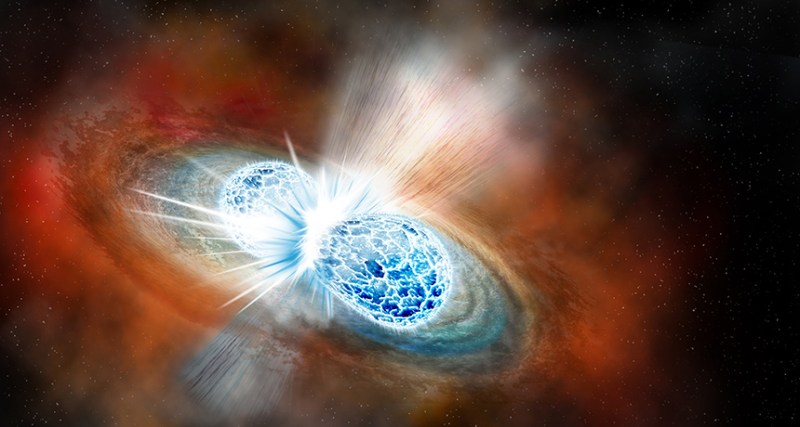Educator Guide: Neutron Star Crash Seen for First Time

BRIGHT BURST After two neutron stars slammed together, as shown in this artist’s conception, scientists detected gravitational waves, a burst of gamma rays and a glow from ejected material.
ROBIN DIENEL, COURTESY OF CARNEGIE INSTITUTION FOR SCIENCE
About this guide
The article “Neutron star crash seen for first time” describes how, for the first time, astrophysicists have observed two neutron stars colliding as well as signs that the collision produced heavy metal elements. The video “Light and gravitational waves reveal a neutron star crash” also provides an overview of the discovery. In this guide, students can focus on details reported in the article, follow connections to earlier articles about black hole collisions and gravitational waves and explore cross-curricular connections to other major science topics in physics, chemistry and engineering. In a related activity, students can calculate some of the physical conditions involved in star and element formation.